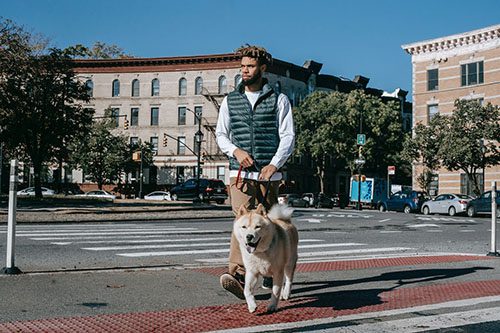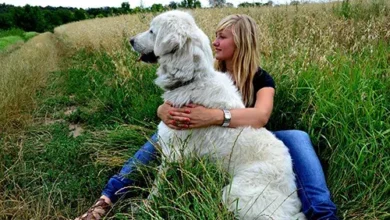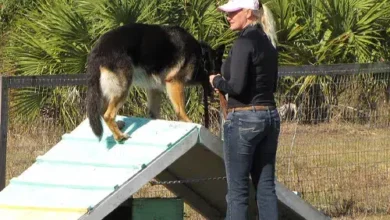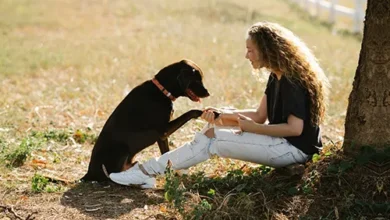Whether you live in town or in the countryside, but of course more so if you live in an urban environment with your dog, it is very important to teach him to cross the road.
Why teach your dog to cross the road?
- For obvious security reasons
- To reinforce obedience and listening to your animal in a stimulating environment
- To teach your dog to wait for your commands before acting
- To maintain control over your dog, even in stimulating environments
- So that walks in town or small towns are more serene for you
What methods to adopt?
Of course, it will always be easier to teach a puppy to cross the road, because the good habits will be formed from an early age. However, even if you adopt an adult dog, it is quite possible to teach him to cross the road.
This learning process can be long, especially for an adult dog who may never have evolved in an urban environment or quite simply for a dog who has never stopped at a pedestrian crossing.
However, with patience, respect for the dog’s learning pace and a gradual process, anything is possible!
Step 1: Learning static orders
To start teaching your dog to cross the road, you must first teach him the static indications (stop, sit, stay still) in a calm environment, without too much stimulation.
Do not start learning directly in the field, namely in town and in front of a pedestrian crossing. Your dog would not be focused enough and this could put him in check.
So, in your garden or in a quiet park, away from distracting noises, start an education lesson that I would call classic:
- Use a short leash (the same one you’ll use in town) and start a tension-free leash walk. As soon as your dog passes you, turn around, slow down or stop. Your dog must understand that he must not pass you and stay at the heels.
- Once leash walking is acquired, teach your dog to hitchhike. Your dog should automatically stop when you hit the stop sign. Thus, on a straight line, walk a few steps at the foot then stop by expressing in a firm voice “stop”. Little tip, if your dog encounters difficulties during this learning process, do not hesitate to make a U-turn before asking him to stop. Indeed, during your U-turn, your dog will automatically end up behind you and it will therefore be easier for you to make him stop.
- Once the stop is acquired, you can then ask your dog to sit and wait (with the indication not to move) and then resume walking when you have decided. To learn how to move, do not hesitate to accompany your indication with a gesture (palm open towards the dog) so that he assimilates the order to a sign.
Be careful, this step is not done in an hour or a day, especially if your dog has never worked on these exercises. Do not burn the steps and get help from a dog trainer if you encounter difficulties.
Step 2: Learning the “sidewalk”
To teach your dog not to cross spontaneously without waiting for your agreement, he must not walk as he pleases on the road. You must teach him to always stay on the sidewalk! This is very important to make the dog understand that the road is inaccessible until you allow him to go there.
And for this learning to be coherent and clear for your dog, it must be systematic. Clearly, never allow your dog a spontaneous action that will then be prohibited. It’s inconsistent and it will hinder learning.
Thus, concretely, as soon as your dog walks on the road, express a firm “hehe” or “no” followed by an indication of action, namely “sidewalk”. Help your dog if necessary by guiding him with a treat for example, and as soon as he is on the sidewalk say “sidewalk…” then reward with a treat.
Moreover, for this exercise, heeling is very important, if your dog does not yet know how to walk on a leash without pulling, resume this learning in a less stimulating environment and with the help of a dog trainer if necessary.
Step 3: Learning the pedestrian crossing
Finally, once the previous steps are acquired, you can then without great difficulty ask your dog to stop, sit down and wait for your command before crossing.
Dogs are very intelligent beings, you will also observe that the more you systematically implement this learning, during each walk, the more your dog will spontaneously suggest a stop at the sight of a pedestrian crossing.
In the beginning, of course, you will always have to reward your dog warmly for having done the right thing, but when the learning is completely acquired, at 100%, the crossings of the road will finally be only a formality and a simple verbal validation will suffice.
One last point, for this learning to be completely understood by your dog, you must make him mark stops systematically, even if there is no traffic. Otherwise, your dog will not understand why sometimes he has the right to cross directly while sometimes he does not.

 5 Basic Obedience Orders to Teach Your Dog
5 Basic Obedience Orders to Teach Your Dog How to Become a Dog Trainer: 5 Successful Tips
How to Become a Dog Trainer: 5 Successful Tips Tips to teach your Dog to bring the ball back
Tips to teach your Dog to bring the ball back Dog Care Career: Great Reasons and Benefits
Dog Care Career: Great Reasons and Benefits Dog Training Plan: Everything You Should Know
Dog Training Plan: Everything You Should Know How to teach your dog to be left alone?
How to teach your dog to be left alone?